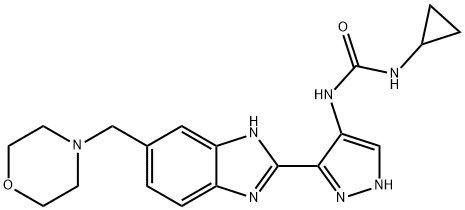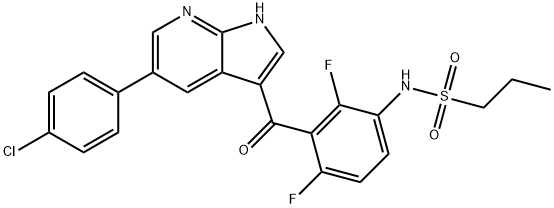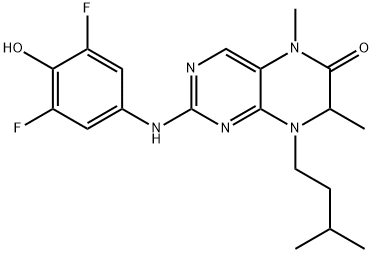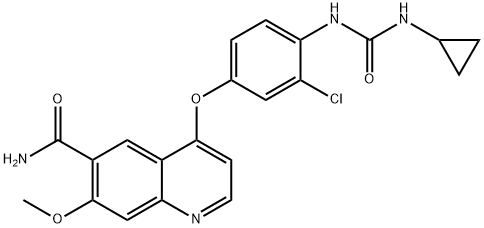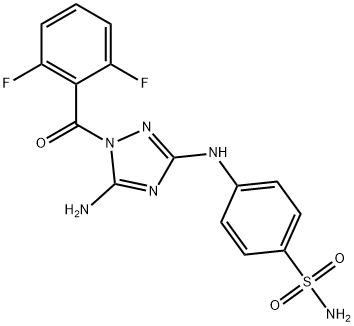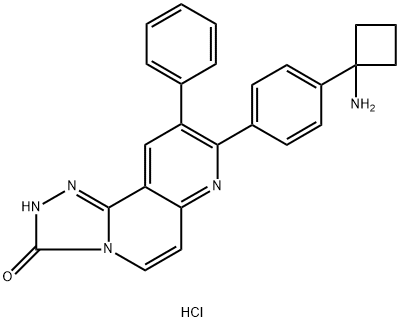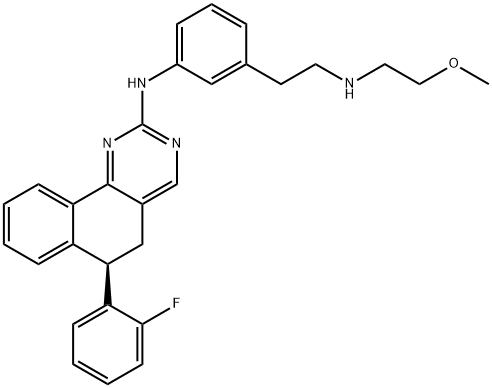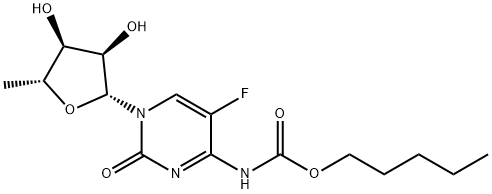Orantinib (SU6668)
- CAS NO.:252916-29-3
- Empirical Formula: C18H18N2O3
- Molecular Weight: 310.35
- MDL number: MFCD03426212
- SAFETY DATA SHEET (SDS)
- Update Date: 2024-11-19 23:02:33
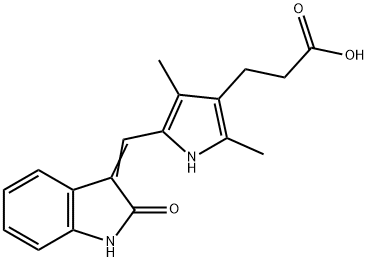
What is Orantinib (SU6668)?
The Uses of Orantinib (SU6668)
3-[2,4-dimethyl-5-[(E)-(2-oxo-1H-indol-3-ylidene)methyl]-1H-pyrrol-3-yl]propanoic acid is a potent inhibitor of Flk-1/KDR, FGFR1 and PDGFRβ with Ki of 2.1 μM, 1.2 μM, and 8 nM, respectively.
The Uses of Orantinib (SU6668)
TSU-68 is a inhibitor that targets vascular endothelial growth factor receptor 2, platelet-derived growth factor receptor β, and fibroblast growth factor receptor 1. The inhibitory effects of TSU-68 towards these growth factors lead to substantial antitumor activity and showed potential in its development in therapeutic uses.
What are the applications of Application
SU 6668 is an antiproliferating agent and ATP-competitive PDGFR, Flk-1/KDR (VEGF), and FGFR inhibitor
Definition
3-[2,4-dimethyl-5-[(E)-(2-oxo-1H-indol-3-ylidene)methyl]-1H-pyrrol-3-yl]propanoic acid is an oxindole that is 3-methyleneoxindole in which one of the hydrogens of the methylene group is substituted by a 2-(2-carboxyethyl)-3,5-dimethylpyrrol-3-yl group. It is an ATP-competitive inhibitor of the tyrosine kinase activity of fibroblast growth facto receptor 1.
Biological Activity
ATP-competitive PDGFR, VEGF and FGFR inhibitor (IC 50 values are 0.06, 2.43, 3.04 and > 100 μ M at PDGFR β , VEGFR2, FGFR1 and EGFR respectively). Inhibits proliferation of HUVEC and NIH3T3 cells in vitro (IC 50 values are 0.41, 9.3 and 16.5 μ M for VEGF, FGF and PDGF-stimulated growth respectively) and induces > 75% growth inhibition against a broad range of tumor types in vivo . Exhibits antiangiogenic, anti-inflammatory, antimetastatic and proapoptotic activity and is orally active.
in vitro
biochemical kinetic studies using isolated flk-1, fgf receptor 1, and pdgf receptor β kinases revealed that tsu-68 has competitive inhibitory properties with respect to atp. in cellular systems, tsu-68 inhibited receptor tyrosine phosphorylation and mitogenesis after stimulation of cells by appropriate ligands [1].
in vivo
oral or i.p. administration of tsu-68 in athymic mice resulted in significant growth inhibition of a diverse panel of human tumor xenografts of glioma, melanoma, lung, colon, ovarian, and epidermoid origin [1].
storage
Store at RT
References
[1] laird ad, vajkoczy p, shawver lk et al. su6668 is a potent antiangiogenic and antitumor agent that induces regression of established tumors. cancer res. 2000 aug 1;60(15):4152-60.
[2] okamoto i, yoshioka h, takeda k et al. phase i clinical study of the angiogenesis inhibitor tsu-68 combined with carboplatin and paclitaxel in chemotherapy-naive patients with advanced non-small cell lung cancer. j thorac oncol. 2012 feb;7(2):427-33.
Properties of Orantinib (SU6668)
| Melting point: | 252-254 °C |
| Boiling point: | 590.5±50.0 °C(Predicted) |
| Density | 1.328±0.06 g/cm3(Predicted) |
| storage temp. | Store at RT |
| solubility | DMSO (Slightly), Methanol (Slightly) |
| form | Solid |
| pka | 4?+-.0.10(Predicted) |
| color | Orange to Brown |
Safety information for Orantinib (SU6668)
Computed Descriptors for Orantinib (SU6668)
New Products
4-Fluorophenylacetic acid 4-Methylphenylacetic acid N-Boc-D-alaninol N-BOC-D/L-ALANINOL Tert-butyl bis(2-chloroethyl)carbamate 3-Morpholino-1-(4-nitrophenyl)-5,6-dihydropyridin- 2(1H)-one Furan-2,5-Dicarboxylic Acid Tropic acid S-2-CHLORO PROPIONIC ACID ETHYL ISOCYANOACETATE 2-Bromo-1,3-Bis(Dimethylamino)Trimethinium Hexafluorophosphate (6-METHYL-[1,3]DITHIOLO[4,5-b]QUINOXALIN-2-ONE INDAZOLE-3-CARBOXYLIC ACID 4-IODO BENZOIC ACID (2-Hydroxyphenyl)acetonitrile 4-Bromopyrazole 5,6-Dimethoxyindanone 2-(Cyanocyclohexyl)acetic acid 4-methoxy-3,5-dinitropyridine 2-aminopropyl benzoate hydrochloride 1-(4-(aminomethyl)benzyl)urea hydrochloride diethyl 2-(2-((tertbutoxycarbonyl)amino) ethyl)malonate tert-butyl 4- (ureidomethyl)benzylcarbamate Ethyl-2-chloro((4-methoxyphenyl)hydrazono)acetateRelated products of tetrahydrofuran
You may like
-
 SU-6668 >95% CAS 252916-29-3View Details
SU-6668 >95% CAS 252916-29-3View Details
252916-29-3 -
 2033-24-1 98%View Details
2033-24-1 98%View Details
2033-24-1 -
 1975-50-4 98%View Details
1975-50-4 98%View Details
1975-50-4 -
 2-HYDROXY BENZYL ALCOHOL 98%View Details
2-HYDROXY BENZYL ALCOHOL 98%View Details
90-01-7 -
 2-Chloro-1,3-Bis(Dimethylamino)Trimethinium Hexafluorophosphate 221615-75-4 98%View Details
2-Chloro-1,3-Bis(Dimethylamino)Trimethinium Hexafluorophosphate 221615-75-4 98%View Details
221615-75-4 -
 61397-56-6 CIS BROMO BENZOATE 98%View Details
61397-56-6 CIS BROMO BENZOATE 98%View Details
61397-56-6 -
 14714-50-2 (2-Hydroxyphenyl)acetonitrile 98+View Details
14714-50-2 (2-Hydroxyphenyl)acetonitrile 98+View Details
14714-50-2 -
 118753-70-1 98+View Details
118753-70-1 98+View Details
118753-70-1
